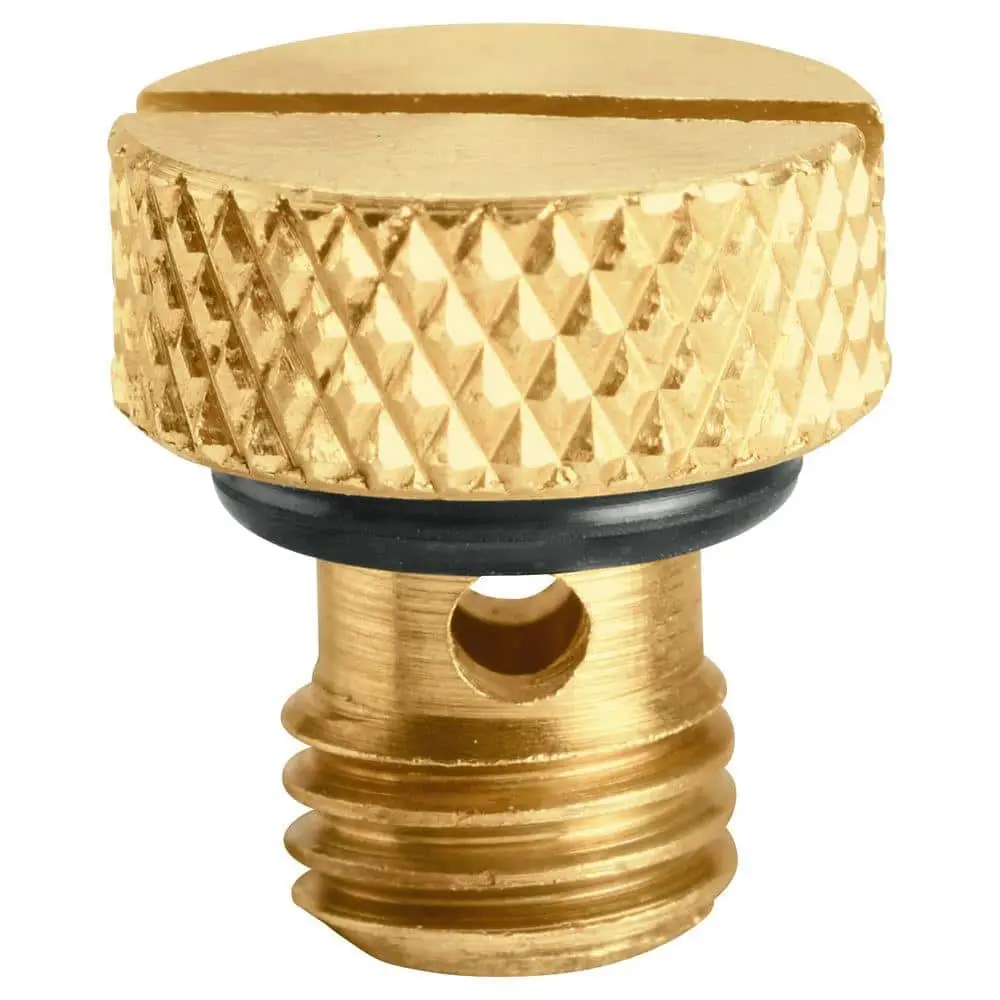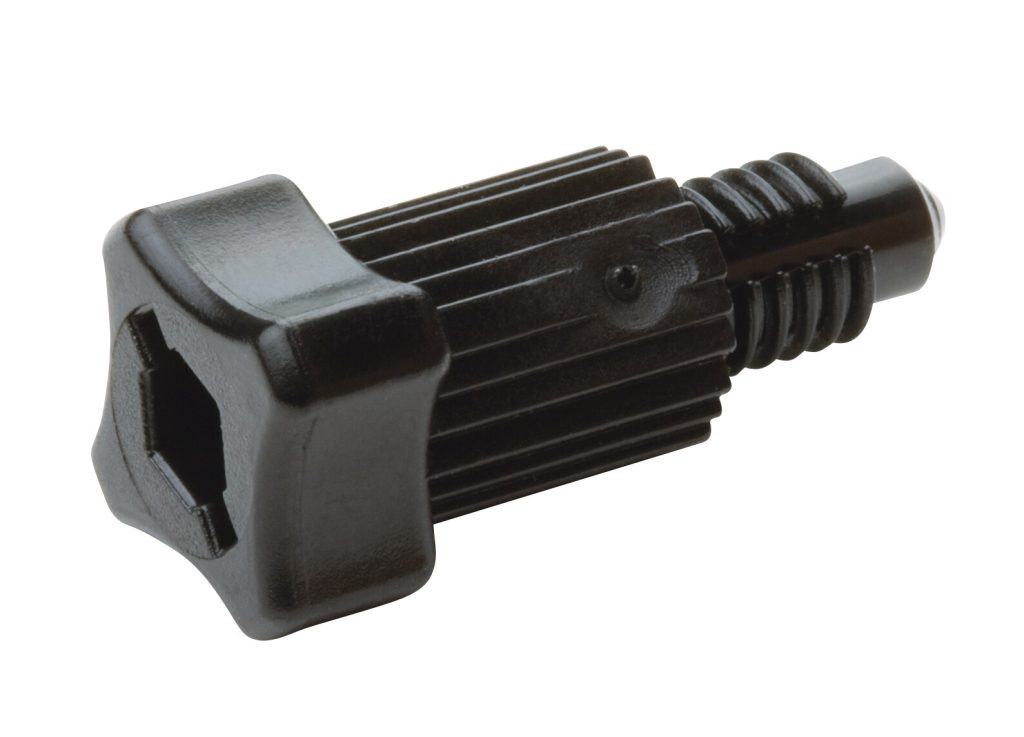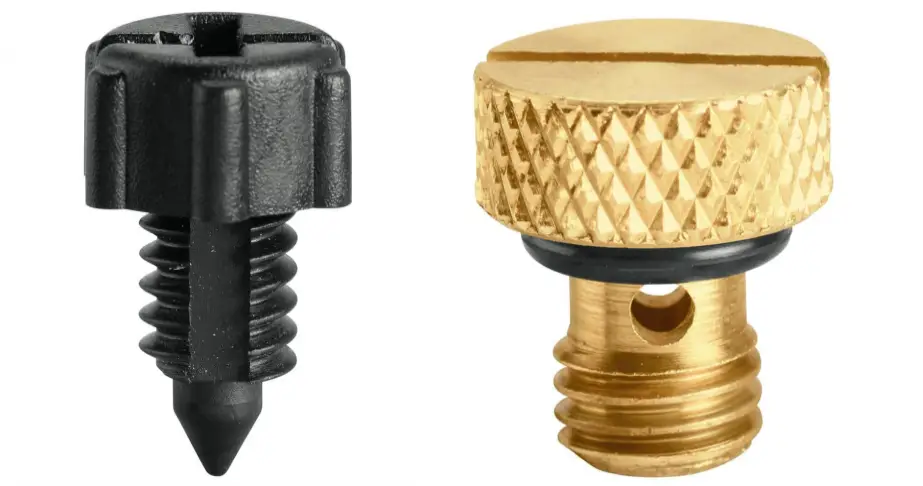Do you enjoy a lush, green lawn or take pride in maintaining a well-functioning sprinkler system?
If so, understanding the sprinkler valve bleed screw is important for your irrigation system’s performance and longevity.
At first glance, the screw may seem like a small, insignificant component of your sprinkler system.
However, it plays a vital role in ensuring efficient and safe operation.
What is a Sprinkler Valve Bleed Screw?
The bleed screw is typically a small knob or screw located on top of the sprinkler valve, allowing for manual control over the system’s pressure.
2 Main Purposes of the Sprinkler Valve Bleed Screw
1. Pressure Relief
Excessive pressure within a sprinkler system can have detrimental effects on its components.
As water is delivered to the sprinkler heads, pressure builds up due to factors such as water supply pressure, elevation changes, and restrictions in the pipes.
This increased pressure can lead to bursts, leaks, and other failures within the system.
Fortunately, the bleed screw comes to the rescue as a pressure relief mechanism.
By opening the bleed screw, you create an outlet for the excess pressure to escape.
As the pressure is released, the risk of damage to pipes, valves, and sprinkler heads is greatly reduced.
This not only ensures the longevity of your sprinkler system but also saves you from costly repairs or replacements down the line.
Related: How Much Brushtox per Gallon of Water?
2. System Maintenance and Winterization
In addition to pressure relief, the bleed screw plays a vital role in routine system maintenance and winterization processes.

During regular maintenance, it’s important to flush and test the sprinkler system to identify any issues and ensure its proper functioning.
The bleed screw allows you to manually flush the system, as opening it allows water to flow freely through the valves and pipes.
By observing the water flow and pressure while the bleed screw is open, you can assess the system’s performance and identify any potential problems, such as clogged sprinkler heads or blocked pipes.
This proactive approach helps maintain the efficiency and effectiveness of your irrigation system.
When it comes to winterizing your sprinkler system, preparing it for the colder months is crucial to prevent damage from freezing temperatures.
The bleed screw plays a key role in this process.
After shutting off the water supply to the system, opening the bleed screw allows any remaining water to drain out.
By removing the water from the system, you minimize the risk of freezing and subsequent expansion that can damage pipes, valves, and fittings.
Proper winterization using the bleed screw helps protect your sprinkler system and ensures it remains in good condition for the following spring.
Related: Is Lava Rock Good For Drainage?
Should Sprinkler Valve Bleed Screw Be Open or Closed?
Understanding when to open or close the sprinkler valve bleed screw is essential for maintaining an efficient and properly functioning sprinkler system.
Let’s take a look at the scenarios where you should open or close the bleed screw.
Sprinkler Valve Bleed Screw Open
When should you open the bleed screw?
Let’s examine the situations where it’s necessary and advantageous to have the bleed screw in the open position.
System flushing and testing
During routine maintenance or when initially starting up the sprinkler system after a long period of inactivity, opening the bleed screw is crucial.
By doing so, you allow water to flow freely through the valves and pipes, flushing out any debris or accumulated sediment that could clog the system or hinder proper operation.
Flushing the system also enables you to test the individual sprinkler heads, ensuring they’re spraying correctly and covering the desired area.
Pressure relief and adjustment
If you observe unusually high water pressure within the system, opening the bleed screw provides an effective means of pressure relief.
As water escapes through the bleed screw, the excess pressure is released, preventing potential damage to pipes, valves, and sprinkler heads.
Furthermore, opening the bleed screw allows you to adjust the overall pressure in the system.
By partially opening or closing the bleed screw, you can fine-tune the pressure to match the specific needs of your landscape, ensuring optimal water distribution and avoiding overwatering or under-watering.

Sprinkler Valve Bleed Screw Closed
While the open position serves important functions, there are times when closing the bleed screw is necessary and beneficial for the overall operation of your sprinkler system.
Normal operation
Under normal circumstances, once you’ve completed system flushing, testing, or pressure adjustment, it’s advisable to close the bleed screw.
Closing the screw ensures that water flow is directed through the designated pathways, allowing the system to operate as intended.
This will prevent unnecessary water wastage and maintain the desired water pressure within the system.
Winterization
Closing the bleed screw is important when preparing your sprinkler system for winter.
After shutting off the water supply to the system, closing the bleed screw helps prevent any residual water from entering the system during freezing temperatures.
This reduces the risk of frozen pipes and subsequent damage caused by ice expansion.
Closing the bleed screw during winterization is a necessary precaution to protect your sprinkler system from costly repairs in the spring.
Related: How to Clean Algae off Landscape Rocks
Troubleshooting Common Issues with the Sprinkler Valve Bleed Screw
Leaks and Drips
If you observe that your sprinkler valve bleed screw is leaking, address it promptly to prevent water wastage and potential damage to the surrounding components.
Here are some troubleshooting steps to resolve this issue.
Check for loose connections
Start by inspecting the connections around the bleed screw.
Ensure that they’re tightened securely. Use a wrench or pliers to snugly tighten any loose fittings or joints.
Examine O-rings and seals
Leaks can occur if the O-ring or seal within the bleed screw assembly is damaged or worn out. Carefully remove the bleed screw and inspect the condition of the O-ring or seal.
Replace them with new ones if you notice any cracks, tears, or deterioration.
You can find suitable O-rings and seals at your local hardware store or irrigation supply center.
Apply thread seal tape
Another common cause of leaks from the bleed screw is insufficient sealing.
Applying thread seal tape, also known as Teflon tape, to the threaded portion of the bleed screw can help create a tight seal and prevent leaks.
Wrap the tape around the threads in a clockwise direction, ensuring a snug fit when the bleed screw is reinstalled.
Seek professional help
If you’ve checked all the connections, O-rings, and seals, and the issue persists, it may be necessary to consult a professional irrigation technician.
They have the expertise and specialized tools to diagnose and repair more complex problems, such as cracks in the valve body or other internal issues.

Difficulties Opening or Closing the Screw
You may encounter difficulties when trying to open or close the sprinkler valve bleed screw sometimes.
This can be due to various factors, including debris accumulation, corrosion, or lack of lubrication. Here’s how you can troubleshoot and overcome these challenges.
Clean the bleed screw
Over time, dirt, debris, and sediment can accumulate around the bleed screw, making it difficult to turn.
Gently clean the screw and the surrounding area using a soft brush or cloth.
Remove any visible debris or buildup that may be hindering smooth operation.
Use a penetrating lubricant
If the bleed screw remains stiff or resistant to movement, applying a penetrating lubricant can help loosen it.
Silicone spray or a specialized penetrating oil can be sprayed or applied to the screw and its mechanism.
Allow the lubricant to penetrate for a few minutes, and then attempt to open or close the screw again. Repeat the process if necessary.
Avoid excessive force
While it’s essential to address difficulties in opening or closing the bleed screw, it’s crucial to avoid applying excessive force.
Applying too much pressure can lead to damage or breakage of the screw or other components.
It may be best to consult a professional for assistance if the screw remains stubbornly stuck or difficult to turn.
Preventative maintenance
Incorporate regular preventative maintenance into your sprinkler system care routine to prevent future difficulties with the bleed screw.
This includes periodic cleaning, lubrication, and inspection of the bleed screw and its surrounding components.
You can minimize the likelihood of encountering difficulties in the future by keeping the screw clean and properly lubricated.
Related
- Shadow Box Fence Pros and Cons
- Top 5 Freeman Framing Nailers Review
- Shadow Box Fence Vs Board on Board Fence (Side by Side Comparison)
- Board on Board Fence Pros and Cons
- Top 5 Types of Pillowcase Closures
- Unknown Advantages of Foam Paint Rollers
- Mexican Landscapers/Yard Workers: All You Need to Know
- How to Clean Algae off Landscape Rocks (Step-by-Step)


